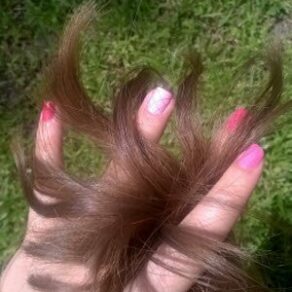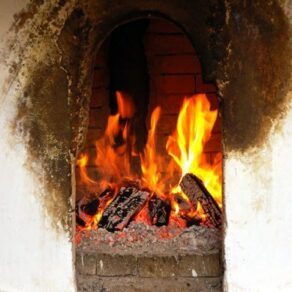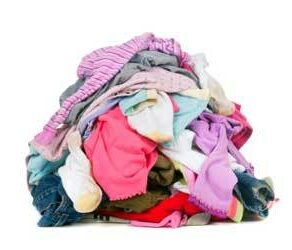As the long days of sunshine begin to fade, so does the need for gardening gear, lawn furniture, and other summer equipment. Winter can be just as hard on our equipment as it is on us, so care should be taken to prepare your summer supplies for the freezing temperatures and snow-covered landscape.
Outdoor Furniture
Lawn Chairs
Any random bulky items like lawn chairs can be attached to the garage rafters with hooks or bungee cords. No rafters available? Stack them on the deck or patio and tie them down with a tarp (knotting the corners of the tarp to the base of the stack). Be sure to wash them first though, and allow them to fully air dry.
Patio Chairs
Remove any cushions or pillows from your outdoor seating and put them in garbage bags. Store the bags somewhere dry over the winter. The chairs themselves can be lined up along the house and covered with a tarp or stacked on a covered porch for the winter. If the chairs are canvas or another fabric, sprinkle a layer of baking soda over them, which will help to keep the fabric dry in the damp weather.
Hammock
Fold up your hammock and put it in a plastic bag or storage box. Sprinkle baking soda over it to keep the ropes or fabric dry in the damp weather and prevent mold or mildew growth.
Outdoor Table
Move an outdoor table near the back door and drape a tarp or plastic tablecloth over it. This creates a convenient place to store firewood during the winter.
Grill
Thoroughly scrub clean the grates of your grill before winter to prevent bacteria from growing on it during the winter months. Put a handful of mothballs on a dish and set the dish in the grill to deter mice or other small rodents from making a nest in your grill over winter. A gas grill should never be stored indoors, not even in the garage. Instead, put a tarp over it and tie the corners of the tarp to the base of the grill.
Gardening Tools
Garden Hose
A garden hose can crack in the cold, so it must come inside before the first freeze of fall. An easy way to store it is by hanging a bicycle hook in the garage and using it for the coiled hose. Be sure all water is emptied from the hose first as it would expand when frozen and damage the hose.
Lawnmower
Empty your lawnmower gas tank when the autumn leaves begin to fall, then let it run until it stops to finish clearing out the lines. Some types of fuel, including unleaded, can solidify in winter and cause problems later. Tie a cloth over the exhaust pipe of the mower to prevent rodents from moving in during the winter; just be sure to take it off before using it in the spring. If you can’t store your lawnmower in a garage or shed, put a tarp over it and tie down the corners of it.
Hand Tools
Most garden tools are rust-proof now, but if yours are not, fill a bucket with sand and bury the metal heads of your gardening tools in the sand. The sand will not freeze, and it will keep your tools protected from the air and elements. Another option is to coat the metal areas on the tools with oil, such as olive oil; just be sure to store them somewhere that won’t get an oil stain.
Large Tools and Supplies
Many of the summer gardening supplies have winter counterparts that are a similar size and shape, which allows them to easily swap places for seasonal convenience. Bags of sand needed for traction in the snow can trade places with the bags of garden soil. Rakes and trowels can be put where the snow shovels currently are stored. A snow blower can swap spots with a leaf blower, and so on. Be creating a storage space somewhere out of the way for the out of season supplies, you always have a convenient way to rotate these items.
Clothing
Summer Clothing Storage Tips
- Wash all of your summer clothing, but don’t use fabric softener as it can damage the fabric while it’s in storage.
%27%20fill-opacity%3D%27.5%27%3E%3Cellipse%20fill%3D%22%23140064%22%20fill-opacity%3D%22.5%22%20rx%3D%221%22%20ry%3D%221%22%20transform%3D%22matrix(1.58916%2053.54451%20-100.02555%202.96869%20137.9%2075.6)%22%2F%3E%3Cellipse%20fill%3D%22%23e4ebcb%22%20fill-opacity%3D%22.5%22%20rx%3D%221%22%20ry%3D%221%22%20transform%3D%22matrix(7.0194%2097.9256%20-246.8665%2017.69561%20141.6%20251.3)%22%2F%3E%3Cellipse%20fill%3D%22%23ced46b%22%20fill-opacity%3D%22.5%22%20rx%3D%221%22%20ry%3D%221%22%20transform%3D%22matrix(-44.66131%20-40.3546%2032.04572%20-35.4657%20129%20205.7)%22%2F%3E%3Cpath%20fill%3D%22%23f3f5fc%22%20fill-opacity%3D%22.5%22%20d%3D%22M252%20137.3l-99.2%20117.3%2095.3-9z%22%2F%3E%3C%2Fg%3E%3C%2Fsvg%3E) Once clean, organize your items by style or type before putting it into a storage container.
Once clean, organize your items by style or type before putting it into a storage container.- Rolling clothes is a more efficient packing method than folding them.
- Never store clothing in the plastic clothing bags from dry cleaners as they may cause your clothes to turn yellow.
- Put the storage container somewhere cool and dry. Avoid putting them in rooms that tend to be damp, such as the basement or garage, or anywhere near a heat source like a hot air vent, radiator, or space heater.
- It’s always a good idea to label a storage box, even if it’s see-through. Easy ways to do this are to tape an index card in the box or apply a piece of masking tape on the box and write on the tape.
- It’s a good idea to leave one bathing suit out of storage in case you decide to use a hot tub or gym sauna.
- Add some dried bay leaves or lavender to your storage container to keep away textile pests like moths.
- Packing away clothing for the season is a great time to get rid of items you no longer want. Any shirt that you only wore once or even not at all during the season this year is a prime candidate for donation.
- Take a picture of each pair of your shoes. Put the shoes in a shoebox, then tape the picture to the front of the box so you know exactly which pair is in which box.
Miscellaneous Gear
Umbrella
Wash your umbrella and allow it to air dry completely before storing it for winter. You may not want to store it directly with your summer clothing as the spring showers could arrive before the warm weather.
Swim Gear
Put small swimming items like your goggles, snorkel, nose plug, flippers or diving rings in a plastic storage container and label the container. Wash all items thoroughly before putting them in the container and be sure they dry fully to prevent any mold or mildew from developing. Store this container alongside your summer clothing container.
Inflatables
Deflate an inflatable pool toy or kiddie pool, sprinkle baking soda over it, then roll it up. Store it somewhere dry.
Balls
All sports balls, toy balls, and even your dog’s fetch ball can easily be stored in a large shopping bag and hung on a hook or nail in a garage or shed.
Tiki Torches
Similarly to the gasoline in a lawnmower engine that should be removed before winter, the oil or fuel in tiki torches should be removed as well. The oil or fuel can thicken and become difficult to clean out.
Kitchenware
Chances are that you won’t be making any margaritas, snow cones, or even fondue during the winter, so if you have an appliance like this that you really only use during summer, you can store it away for the winter. An easy way to do this is to have two places for your seasonal kitchenware in your kitchen: the in-season kitchenware in one of the more convenient cabinets and the out-of-season supplies in the least convenient cabinet. By doing this, you can just swap places with the winter items that you now want in the kitchen like holiday platters or a hot beverage maker.
Additional Tips
- Storing seasonal items in suitcases is a great way to save space.
- Always try to store items that are in a garage or shed off the floor to avoid contact with dirt or bugs.
- If you need to create extra storage space in your home, you can create a built-in shelving area by removing a section of drywall from one wall and nailing some wood boards between the wall studs.
Sources
- The Queen of Clean’s Complete Cleaning Guide by Linda Cobb
- Complete Household Handbook by Good Housekeeping
- Home Comforts: The Art & Science of Keeping House by Cheryl Mendelson
- In the Kitchen with Heloise by Heloise
- Homemade by Reader’s Digest
- Baking Soda by Vicki Lansky
- Cleaning Plain & Simple by Donna Smallin
- 1001 Do-It-Yourself Hints & Tips by Reader’s Digest
- Vinegar, Duct Tape, Milk Jugs & More by Earl Proulx
- Practical Problem Solver by Earl Proulx
- The Cleaning Bible by Kim Woodburn and Aggie Mackenzie
- How to Clean Practically Anything by Consumer Reports
- 1000 Best Quick and Easy Organizing Secrets by Jamie Novack

 Once clean, organize your items by style or type before putting it into a storage container.
Once clean, organize your items by style or type before putting it into a storage container.







Leave a reply